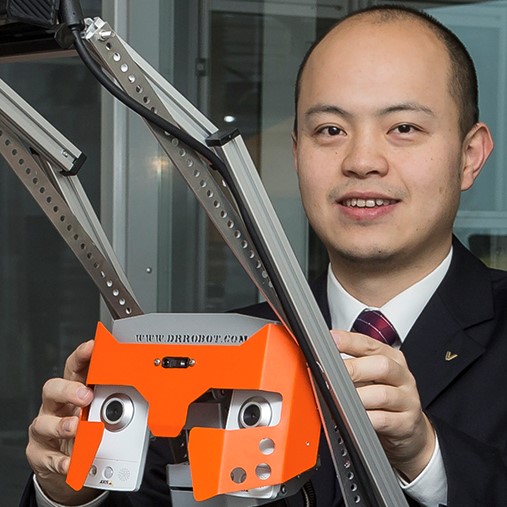Environmental prediction in digital twins for smart cities
Professor Dr Hui Liu has an international track record in big data for smart cities. He recognises that there is a lack of data to support making better use of environmental forecasting algorithms to incorporate into digital twins of smart cities. The project aims to build collaborations to improve modelling of infrastructure performance under changing climate conditions.

The data bottleneck
During his years of research on smart city big data, Professor Dr Liu has found that data is one of the bottlenecks for current environmental forecasting algorithms. Through the Distinguished International Associates (DIA) programme, he expects to bring digital twins closer to forecasting sciences, to better model the impact of climate on critical infrastructure.
One of the Academy’s strategic goals of a sustainable society is challenged by severe environmental stress affecting the safety of critical infrastructure. There have been many accidents worldwide involving environmental impacts on critical infrastructure. For example, in China in 2017, a train derailed on the southern Xinjiang railway because of a sandstorm, killing three passengers. The project aims to connect the two communities of digital twins and forecasting through activities such as visits and workshops.
Tackling the problem
Digital twins can provide more comprehensive data for the forecasting methods, and the forecasting methods enable better modelling in the digital twins. Through international collaboration supported by the project, it is anticipated that better environmental prediction tools for critical infrastructure can be produced.
“The project aims to ensure the safe operation of critical infrastructure, which is an important factor in promoting Academy's strategy”
Critical infrastructure plays an important role in delivering well-being and ensuring effective economic activities, supporting the Academy’s strategic goal of an inclusive society. By creating better environmental adaptability of critical infrastructure this project aims to support economic activities. In doing so, it will boost an inclusive economy and reduce all-life-cycle costs of critical infrastructure, therefore attracting more investment.
The project
The DIA-supported project brings together Prof Dr Liu with Nikolaos Nikitas, an associate professor in the School of Civil Engineering at the University of Leeds in the UK. He has previously worked on developing extreme early warning systems for critical bridges for National Highways. He has also worked on the Alan Turing Institute’s Data Centric Engineering programme, along with his role as Deputy Director of the Materials & Structures Group and the Neville Centre at the University of Leeds. A second collaborator is Dong Xu, a director and senior engineer at the New Energy Technology Research Institute at the China Energy Group. Dong will provide a link into China’s engineering community and promote the progress of the project.
Using the network of the DIA programme and in line with its aims, Professor Dr Liu expects to build long-term cooperation with academics, scientists, and engineers in infrastructure safety fields from China and the UK. They are planning international conferences, workshops, and journal special issues on digital twins and prediction techniques for infrastructure; discussions on the international research progress; and aim to inspire future collaboration research.
They also plan to organise for Chinese project participants to visit the UK and develop relationships and projects around environmental digital-twin predictions. Finally, they aim to build an official collaboration network of environmental digital-twin predictions within related organisations and publicise these environmental digital-twin prediction tools and demonstrators.
Related content
DIA awardees
Distinguished International Associates (DIA) are international engineers working across all sectors. They work at the c…
FAQ
Information and answers to common queries about the Distinguished International Associates (DIA) Programme
